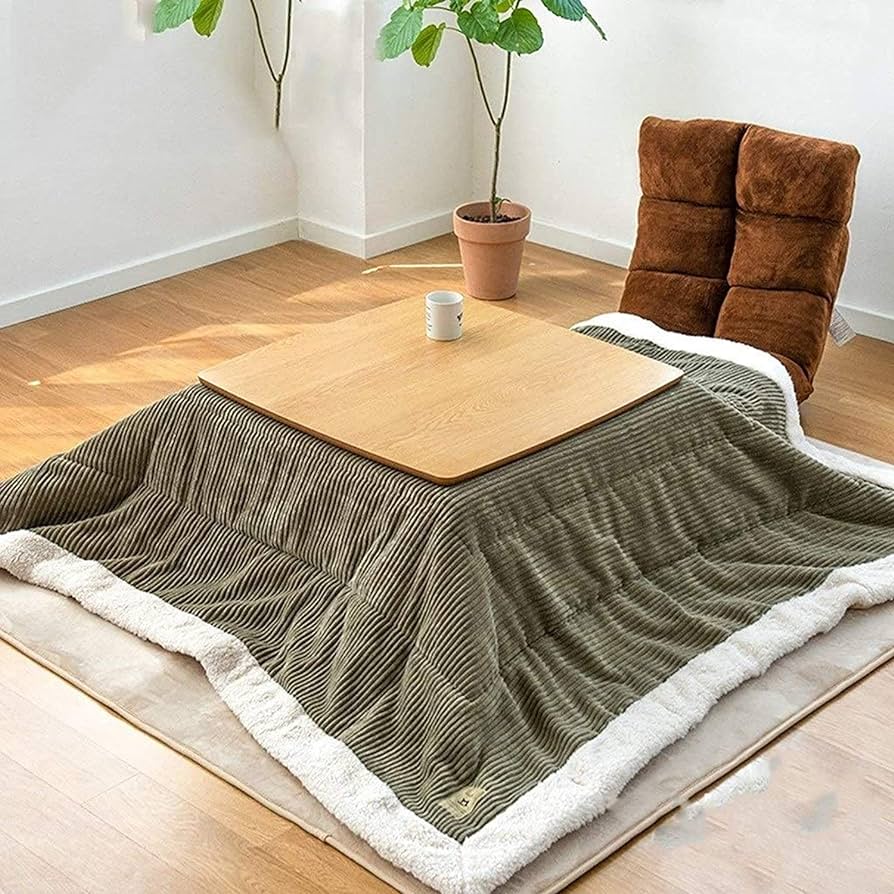Kotatsu is a unique piece of furniture that originated in Japan and has been a staple in Japanese households for centuries. It combines a low table with a heating element covered by a blanket or futon, creating a warm and cozy space for relaxation, dining, and socializing during the cold winter months. In this article, we will explore the history, design, benefits, and usage of kotatsu, as well as tips for incorporating this traditional Japanese heating table into your own home.
History of Kotatsu
The history of kotatsu dates back to the Muromachi period (1336-1573) in Japan. During this time, people used charcoal braziers called hibachis for heating their homes. However, these hibachis were not very efficient and often caused fires. To address this issue, the kotatsu was developed as a safer alternative.
The earliest kotatsu were simply charcoal braziers placed under a low table covered with a blanket or quilt. Over time, the design evolved, with the introduction of electric heaters in the early 20th century making kotatsu more convenient and safer to use. Today, kotatsu come in various styles and designs, but they all serve the same purpose of providing warmth and comfort during the winter season.
Design of Kotatsu
A typical kotatsu consists of three main components: a low table (chabudai), a heating element (kotatsu-gu), and a blanket or futon (kotatsu-mo). The table is usually made of wood and has short legs to keep it close to the ground. The heating element is placed underneath the table and can be either electric or traditional charcoal. The blanket or futon is draped over the table to trap the heat and create a cozy enclosure.
Benefits of Kotatsu
Warmth: The primary benefit of kotatsu is its ability to provide warmth during cold weather. By enclosing the lower body in a blanket or futon and trapping the heat from the heating element, kotatsu create a cozy microclimate that helps keep people warm and comfortable.
Space-saving: Kotatsu are low to the ground and have a compact design, making them ideal for small living spaces. They can be easily stored away when not in use, allowing for more flexibility in room layout and furniture arrangement.
Versatility: Kotatsu can be used for a variety of purposes, including dining, studying, working, or simply relaxing. They provide a comfortable and inviting space for activities that require sitting on the floor, such as eating traditional Japanese meals or enjoying tea with friends.
Energy efficiency: Electric kotats’u are energy-efficient heating options compared to central heating systems, as they only heat the immediate area around the table. This can lead to cost savings on heating bills, especially in homes with limited insulation or drafty windows.
Usage Tips for Kotatsu
Use a timer: If you have an electric kotats’u, consider using a timer to control the heating element. This can help save energy and prevent overheating, especially if you tend to forget to turn it off when not in use.
Maintain proper ventilation: To prevent carbon monoxide buildup, make sure to use a charcoal kotats’u in a well-ventilated area and avoid using it in enclosed spaces for extended periods.
Keep the area clean: Regularly clean the table, heating element, and blanket or futon to prevent dust buildup and maintain hygiene.
Layer clothing: While kotats’u provide warmth, it’s still a good idea to dress warmly and layer clothing to stay comfortable, especially during extremely cold weather.
Conclusion
Kotats’u are a traditional Japanese heating table that offer warmth, comfort, and versatility for cold winter days. Whether you’re looking to create a cozy gathering space for family and friends or simply want to stay warm while relaxing at home, kotats’u are a practical and stylish addition to any living space. With proper usage and maintenance, kotats’u can provide years of enjoyment and help you embrace the art of cozy living.







